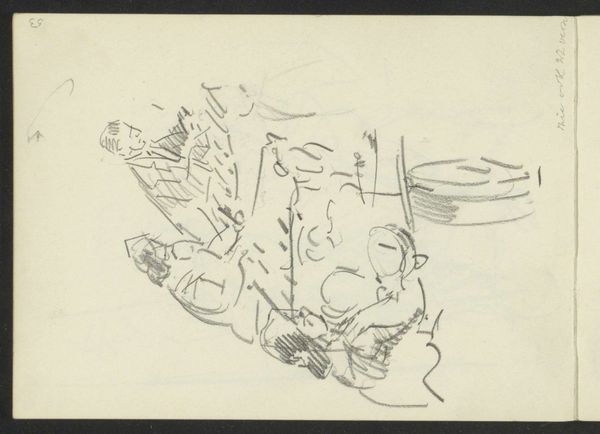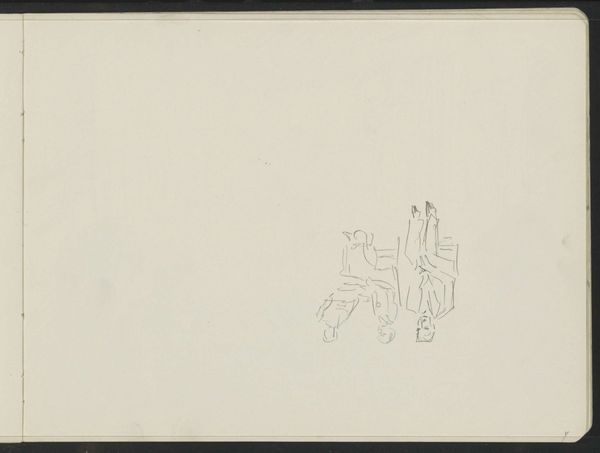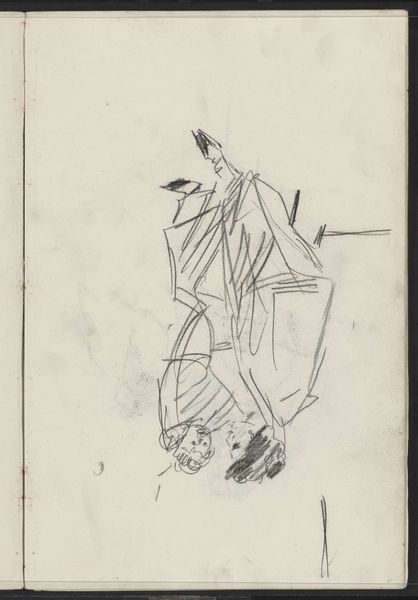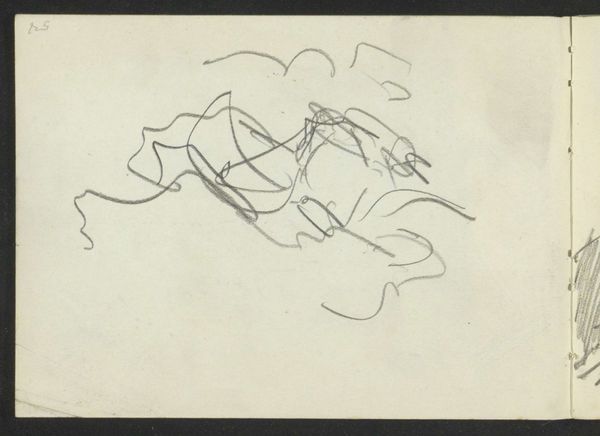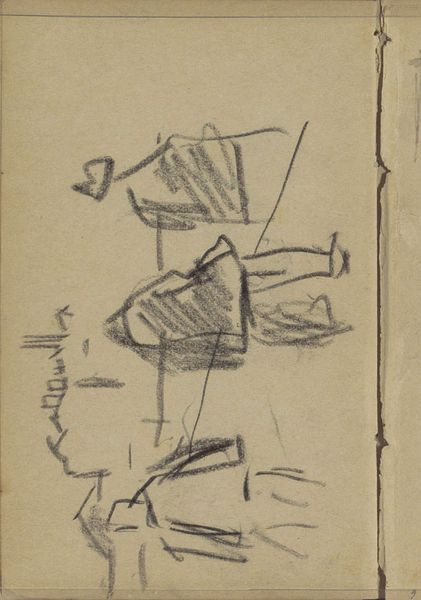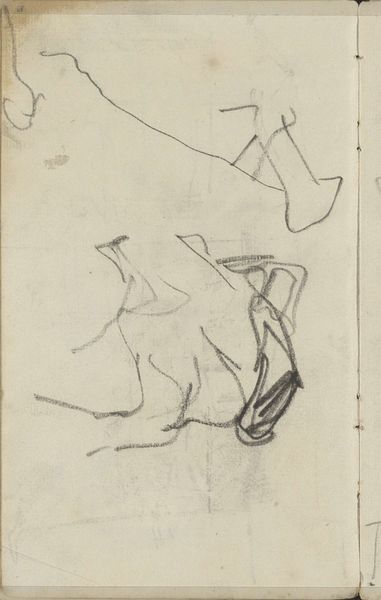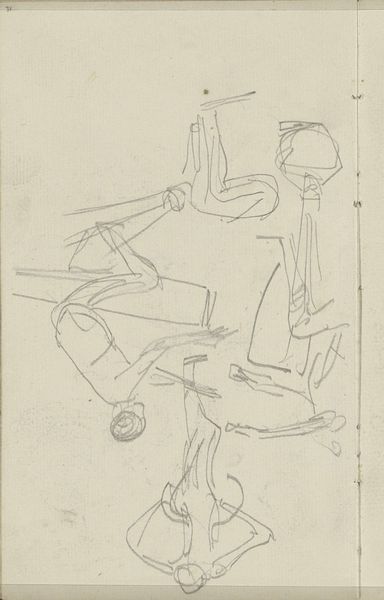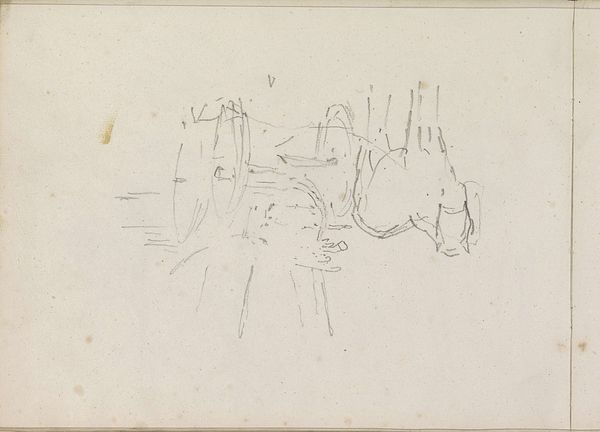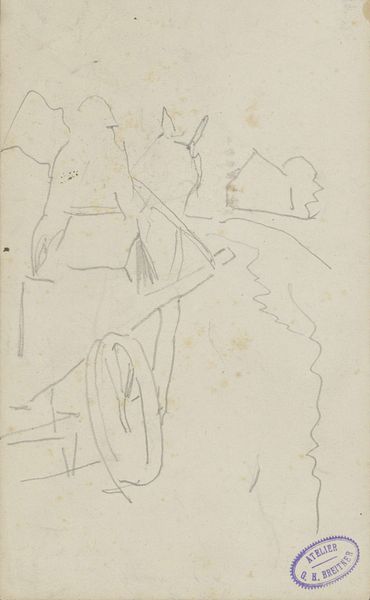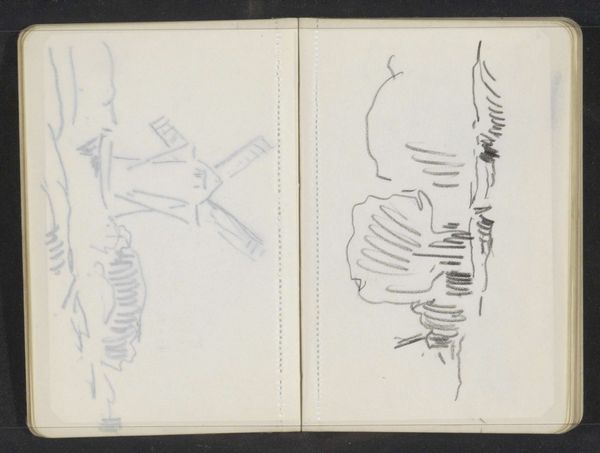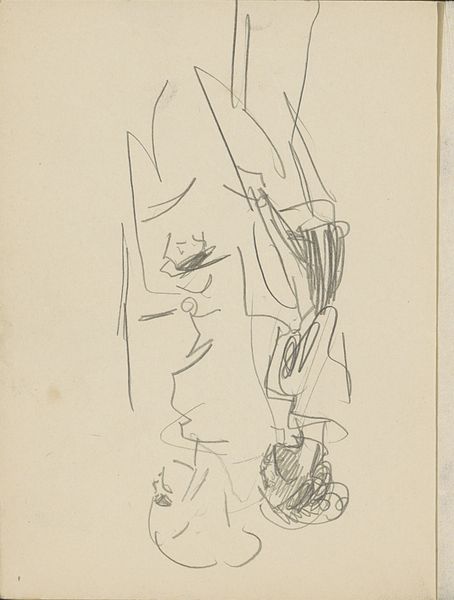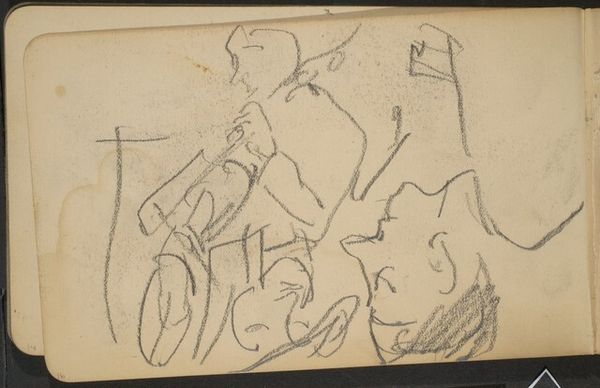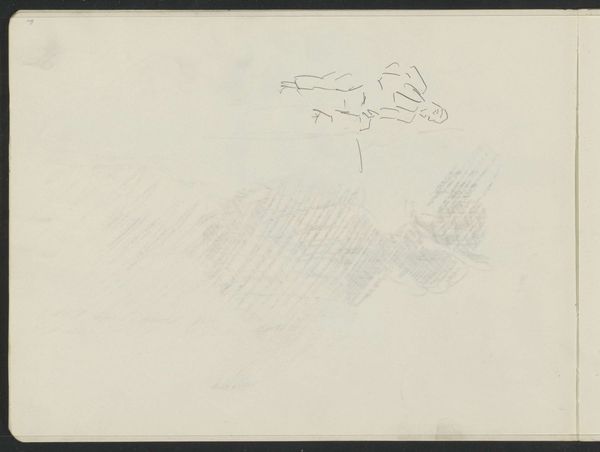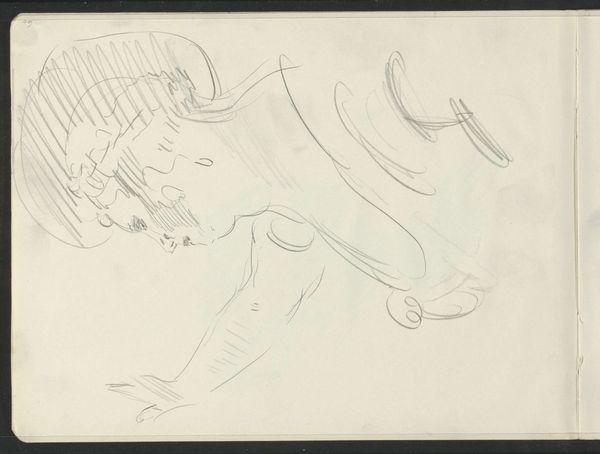
Copyright: Rijks Museum: Open Domain
Curator: My first impression is that this drawing has an unusual perspective, looking down as if from a balcony or a tall window. There's something secretive about it. Editor: Indeed. What we have here is a work by Isaac Israels, aptly named "Groep staande vrouwen met hoeden," or "Group of Standing Women with Hats," likely executed sometime between 1875 and 1934. It’s an ink drawing on paper, a quick study in his signature impressionistic style. Curator: The hats are remarkable; they are barely hinted at, and yet they give an insight into social expectations and sartorial codes for women of that era. This snapshot quality, typical of Israels, gives a voyeuristic sense as if we are observing this group in an unguarded moment. Did these women know they were being observed, even drawn? Were their voices, their concerns and expectations heard at the time? Editor: These hats, although mere scribbles, speak volumes! Hats carried such social meaning and distinction. And look at the arrangement – there is almost a hieroglyphic quality about their stances, repeated and varied and with differing emotional presence or energy to them, but I feel almost as though there is something that can be decoded or learned from understanding the order that he is placing them in! The sketch might serve as a commentary on women's collective identity and experiences in the late 19th or early 20th century, showing their roles and limitations in public space. Curator: Absolutely, the repetitive lines suggest a sense of unity, but also the potential for constraint. But what narratives do we assume or assign to them and why, without letting these lines—almost ephemeral—speak for themselves. I almost read it as a mirror to what remains unseen, ignored or taken for granted within cultural discourse when considering the lived realities of women at this point in time. Editor: Yes, that resonance between surface and hidden depths certainly keeps the piece vibrant, still. The use of ink—a relatively permanent medium—to capture this fleeting scene elevates these everyday encounters beyond a mere sketch, as the figures capture, as well, the energy that women create even if within narrow spheres. Curator: I find myself returning to the gaze downwards: Is it a signifier of unequal relations, almost an attempt to reverse it via art? Maybe Israels was ahead of his time in this seemingly quick sketch, anticipating many conversations which, now, decades after, still echo and resonate! Editor: Absolutely. An apparently light touch, but with great social significance. Thank you for lending your insight into the artwork. Curator: Likewise, the exploration of those archetypal emblems has unlocked yet more ideas.
Comments
No comments
Be the first to comment and join the conversation on the ultimate creative platform.
